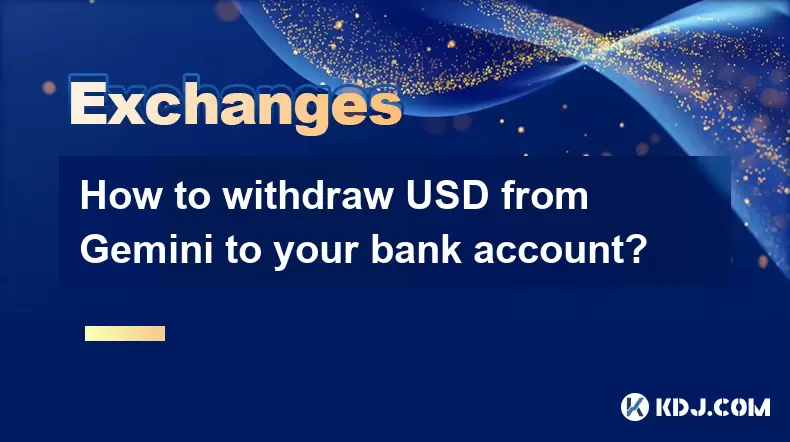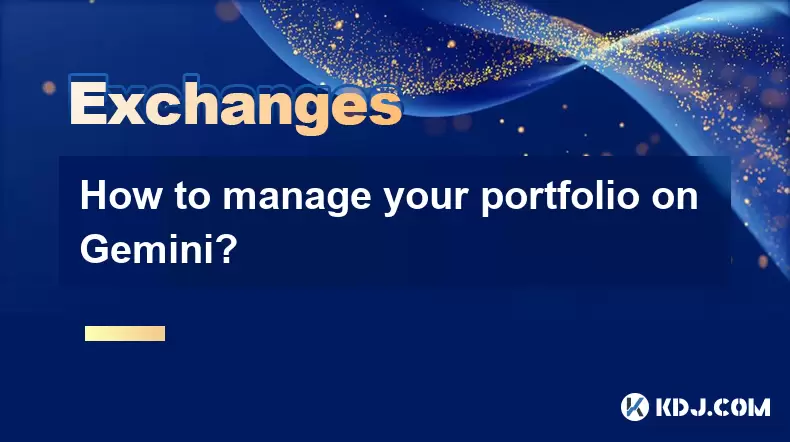-
 Bitcoin
Bitcoin $115000
0.12% -
 Ethereum
Ethereum $3701
4.50% -
 XRP
XRP $3.081
2.99% -
 Tether USDt
Tether USDt $0.0000
-0.01% -
 BNB
BNB $767.9
1.45% -
 Solana
Solana $169.5
3.13% -
 USDC
USDC $0.9999
0.01% -
 Dogecoin
Dogecoin $0.2106
4.30% -
 TRON
TRON $0.3334
1.62% -
 Cardano
Cardano $0.7564
2.54% -
 Stellar
Stellar $0.4165
0.76% -
 Hyperliquid
Hyperliquid $38.75
0.25% -
 Sui
Sui $3.593
3.00% -
 Chainlink
Chainlink $17.08
3.59% -
 Bitcoin Cash
Bitcoin Cash $573.6
4.35% -
 Hedera
Hedera $0.2508
-0.84% -
 Avalanche
Avalanche $23.07
6.46% -
 Ethena USDe
Ethena USDe $1.001
-0.02% -
 Litecoin
Litecoin $120.8
8.17% -
 UNUS SED LEO
UNUS SED LEO $8.943
-0.32% -
 Toncoin
Toncoin $3.400
-5.60% -
 Shiba Inu
Shiba Inu $0.00001255
1.54% -
 Uniswap
Uniswap $9.908
6.32% -
 Polkadot
Polkadot $3.718
2.10% -
 Monero
Monero $303.0
-0.74% -
 Dai
Dai $0.9999
-0.02% -
 Bitget Token
Bitget Token $4.392
0.91% -
 Cronos
Cronos $0.1403
6.31% -
 Pepe
Pepe $0.00001076
1.13% -
 Aave
Aave $267.2
1.80%
How to use simulated trading on an exchange? Virtual funds operation guide
Simulated trading on crypto exchanges lets users practice with virtual funds, helping them learn platform features, test strategies, and gain confidence without financial risk.
Jun 15, 2025 at 01:08 pm

Understanding Simulated Trading on Cryptocurrency Exchanges
Simulated trading, also known as paper trading, is a practice where users engage in cryptocurrency trading using virtual funds instead of real money. This feature is commonly offered by many digital asset exchanges to allow traders, especially beginners, to familiarize themselves with the platform’s interface and market dynamics without financial risk. Through simulated trading, users can test strategies, understand order types, and gain confidence before transitioning to live trading.
Simulated trading mirrors real-time market conditions, including price fluctuations, liquidity, and trading volume. It allows users to experience how buy/sell orders are executed, how stop-loss and take-profit mechanisms work, and how different trading pairs behave under various market scenarios.
Accessing the Simulated Trading Feature
To begin using simulated trading on an exchange, users must first ensure that the platform they are registered on supports this functionality. Not all exchanges offer virtual funds, so it's crucial to check for the availability of a demo account or sandbox environment within the platform settings or user dashboard.
- Log in to your exchange account. If you don’t have one, create an account and complete any necessary verification steps.
- Navigate to the trading section or portfolio management area of the exchange.
- Look for a toggle or tab labeled “Demo Mode,” “Practice Account,” or “Simulated Trading.”
- Activate the feature and confirm that virtual funds have been credited to your demo wallet.
Some platforms may require additional setup, such as selecting a base currency (e.g., USDT, BTC, ETH) or choosing which markets you wish to trade in during simulation.
Executing Trades Using Virtual Funds
Once the simulated mode is active, users will notice that their balance reflects only virtual assets. These balances are not tied to real deposits and cannot be withdrawn, but they function identically to real funds within the trading interface.
- Select a trading pair such as BTC/USDT or ETH/BUSD.
- Place a limit or market order based on your strategy. The system will execute the trade according to current simulated prices.
- Observe open orders, filled trades, and transaction history in the same way as live trading.
- Use technical indicators, charts, and order books just as you would with real funds.
It’s important to treat simulated trading seriously. Many users make the mistake of being reckless with virtual funds, which defeats the purpose of learning proper risk management techniques.
Managing Positions and Orders
One of the key benefits of simulated trading is the ability to manage positions and experiment with advanced order types. Users can set up stop-limit orders, trailing stops, or even test margin trading if the simulation environment supports it.
- Open the order management panel after placing a trade.
- Modify existing orders by adjusting prices or quantities.
- Cancel pending orders if the market moves against your expectations.
- Test automated trading bots or scripts within the simulated environment if available.
By practicing these actions repeatedly, traders can become more proficient in handling complex trading tools without risking actual capital.
Analyzing Performance and Learning from Mistakes
After executing several trades, users should review their performance within the simulated account. Most exchanges provide detailed analytics, including profit and loss reports, win/loss ratios, and average holding periods.
- Check the performance dashboard to see how your simulated portfolio has evolved over time.
- Identify patterns in successful or unsuccessful trades.
- Compare your results across different trading pairs or strategies.
- Adjust your approach and re-simulate to refine your decision-making process.
This analytical phase is critical for developing a disciplined trading mindset and improving execution accuracy when moving to live markets.
Frequently Asked Questions
Q: Can I reset my simulated trading account if I lose all virtual funds?
A: Yes, most platforms allow users to reset their demo accounts after reaching a zero balance. Look for a “Reset Demo Balance” option in your account settings or contact support for assistance.
Q: Are the market data and prices in simulated trading real-time?
A: Yes, simulated trading typically uses real-time market data feeds. Price movements, order book depth, and trade executions reflect actual market conditions at any given moment.
Q: Is there a time limit for using simulated trading?
A: Some exchanges impose a time limit on demo accounts, while others allow indefinite use. Check your platform’s documentation or help center for specific policies regarding demo account validity.
Q: Can I switch between simulated and live trading freely?
A: Yes, users can usually toggle between demo and live modes within the trading interface. However, some exchanges may require separate login credentials or account structures for each mode.
Disclaimer:info@kdj.com
The information provided is not trading advice. kdj.com does not assume any responsibility for any investments made based on the information provided in this article. Cryptocurrencies are highly volatile and it is highly recommended that you invest with caution after thorough research!
If you believe that the content used on this website infringes your copyright, please contact us immediately (info@kdj.com) and we will delete it promptly.
- Velo Universe, DEX, and DeFi Security: Navigating the Future of Decentralized Trading
- 2025-08-05 09:25:13
- Bitget Wallet Revolutionizes Solana with Gas-Free Transactions: A New Era for DeFi
- 2025-08-05 09:25:13
- Cryptocurrency, Altcoins, and Profit Potential: Navigating the Wild West
- 2025-08-04 14:50:11
- Blue Gold & Crypto: Investing Disruption in Precious Metals
- 2025-08-04 14:30:11
- Japan, Metaplanet, and Bitcoin Acquisition: A New Era of Corporate Treasury?
- 2025-08-04 14:30:11
- Coinbase's Buy Rating & Bitcoin's Bold Future: A Canaccord Genuity Perspective
- 2025-08-04 14:50:11
Related knowledge

How to set and manage alerts on the Gemini app?
Aug 03,2025 at 11:00am
Understanding the Gemini App Alert SystemThe Gemini app offers users a powerful way to stay informed about their cryptocurrency holdings, price moveme...

How to use the Gemini mobile app to trade on the go?
Aug 04,2025 at 09:14am
Setting Up the Gemini Mobile AppTo begin trading on the go using the Gemini mobile app, the first step is installing the application on your smartphon...

What to do if you forgot your Gemini password?
Aug 04,2025 at 03:42am
Understanding the Role of Passwords in Gemini AccountsWhen using Gemini, a regulated cryptocurrency exchange platform, your password serves as one of ...

What are the websocket feeds available from the Gemini API?
Aug 03,2025 at 07:43pm
Overview of Gemini WebSocket FeedsThe Gemini API provides real-time market data through its WebSocket feeds, enabling developers and traders to receiv...

How to withdraw USD from Gemini to your bank account?
Aug 04,2025 at 11:01am
Understanding Gemini and USD WithdrawalsGemini is a regulated cryptocurrency exchange platform that allows users to buy, sell, trade, and store digita...

How to manage your portfolio on Gemini?
Aug 03,2025 at 10:36am
Accessing Your Gemini Portfolio DashboardTo begin managing your portfolio on Gemini, you must first log in to your account through the official websit...

How to set and manage alerts on the Gemini app?
Aug 03,2025 at 11:00am
Understanding the Gemini App Alert SystemThe Gemini app offers users a powerful way to stay informed about their cryptocurrency holdings, price moveme...

How to use the Gemini mobile app to trade on the go?
Aug 04,2025 at 09:14am
Setting Up the Gemini Mobile AppTo begin trading on the go using the Gemini mobile app, the first step is installing the application on your smartphon...

What to do if you forgot your Gemini password?
Aug 04,2025 at 03:42am
Understanding the Role of Passwords in Gemini AccountsWhen using Gemini, a regulated cryptocurrency exchange platform, your password serves as one of ...

What are the websocket feeds available from the Gemini API?
Aug 03,2025 at 07:43pm
Overview of Gemini WebSocket FeedsThe Gemini API provides real-time market data through its WebSocket feeds, enabling developers and traders to receiv...

How to withdraw USD from Gemini to your bank account?
Aug 04,2025 at 11:01am
Understanding Gemini and USD WithdrawalsGemini is a regulated cryptocurrency exchange platform that allows users to buy, sell, trade, and store digita...

How to manage your portfolio on Gemini?
Aug 03,2025 at 10:36am
Accessing Your Gemini Portfolio DashboardTo begin managing your portfolio on Gemini, you must first log in to your account through the official websit...
See all articles

























































































